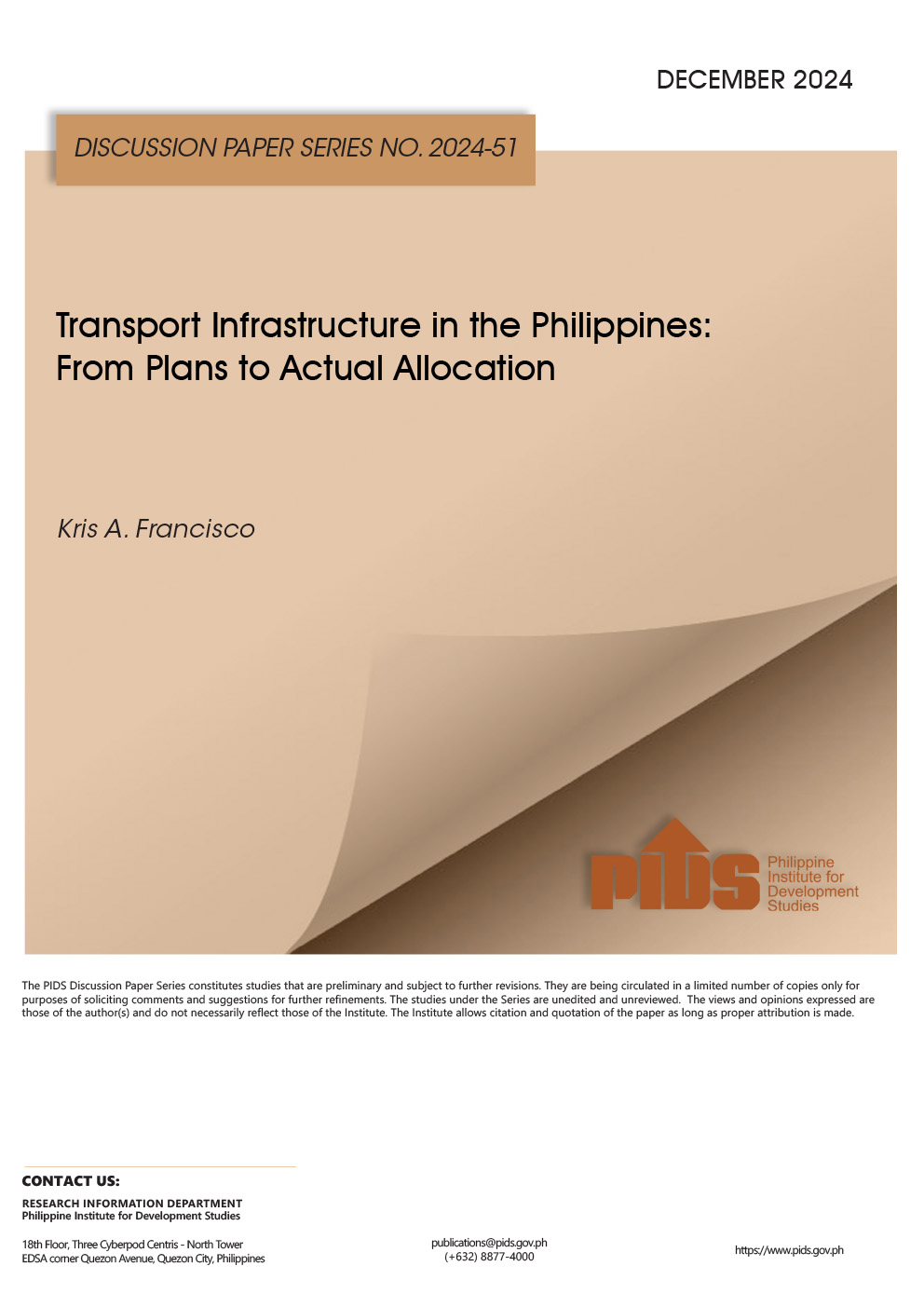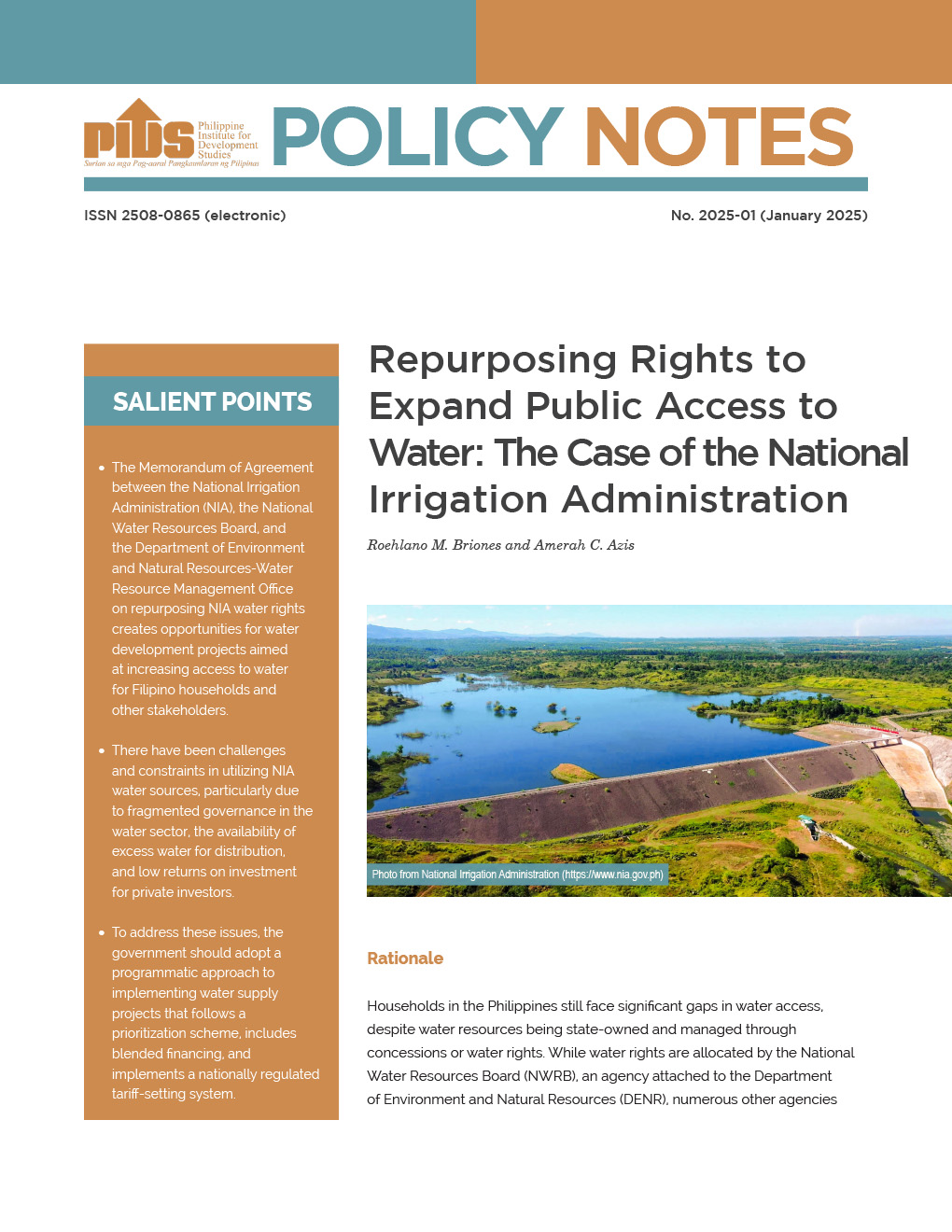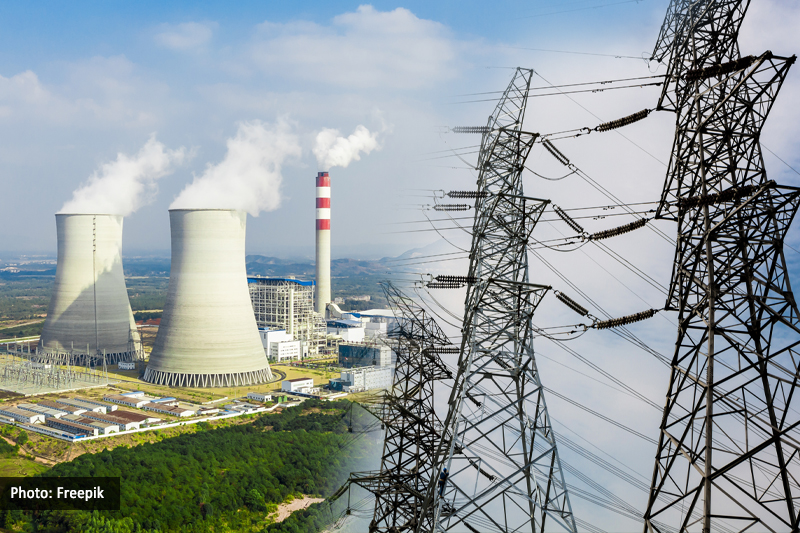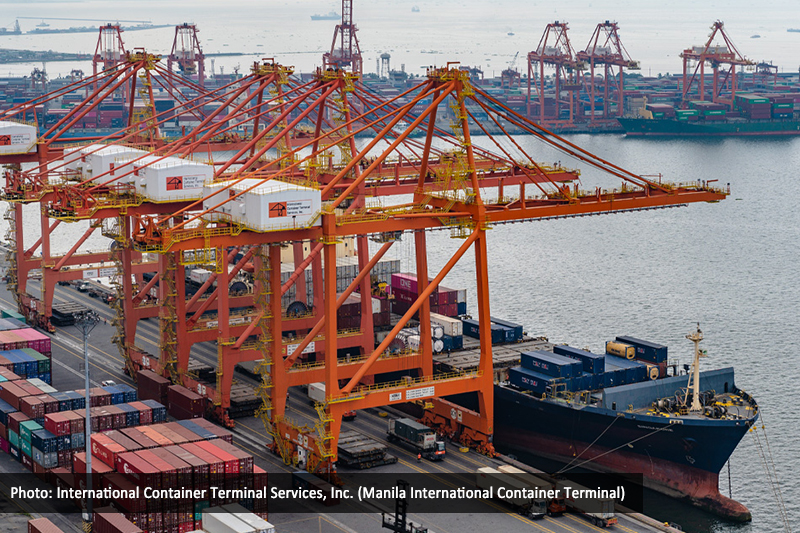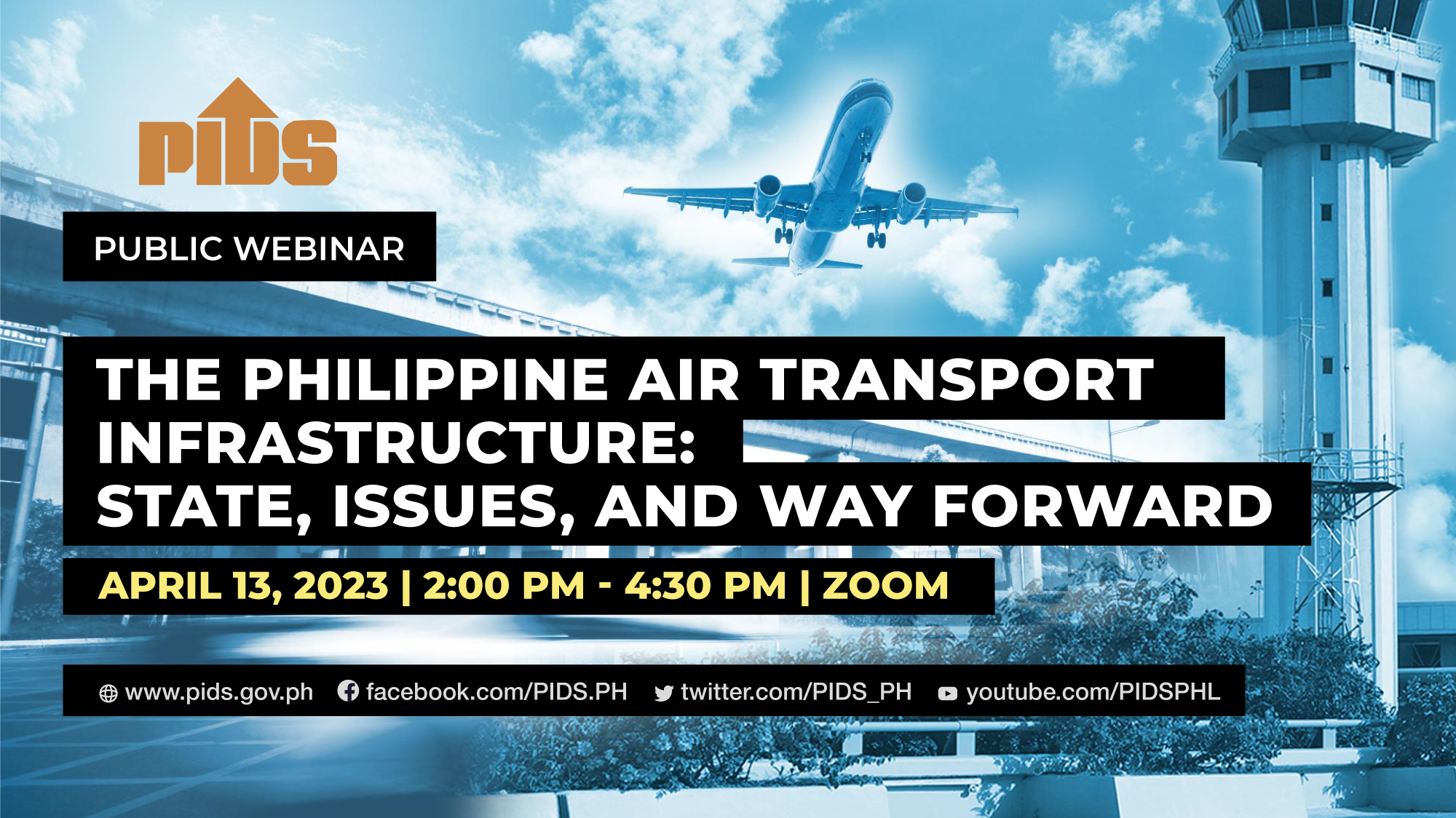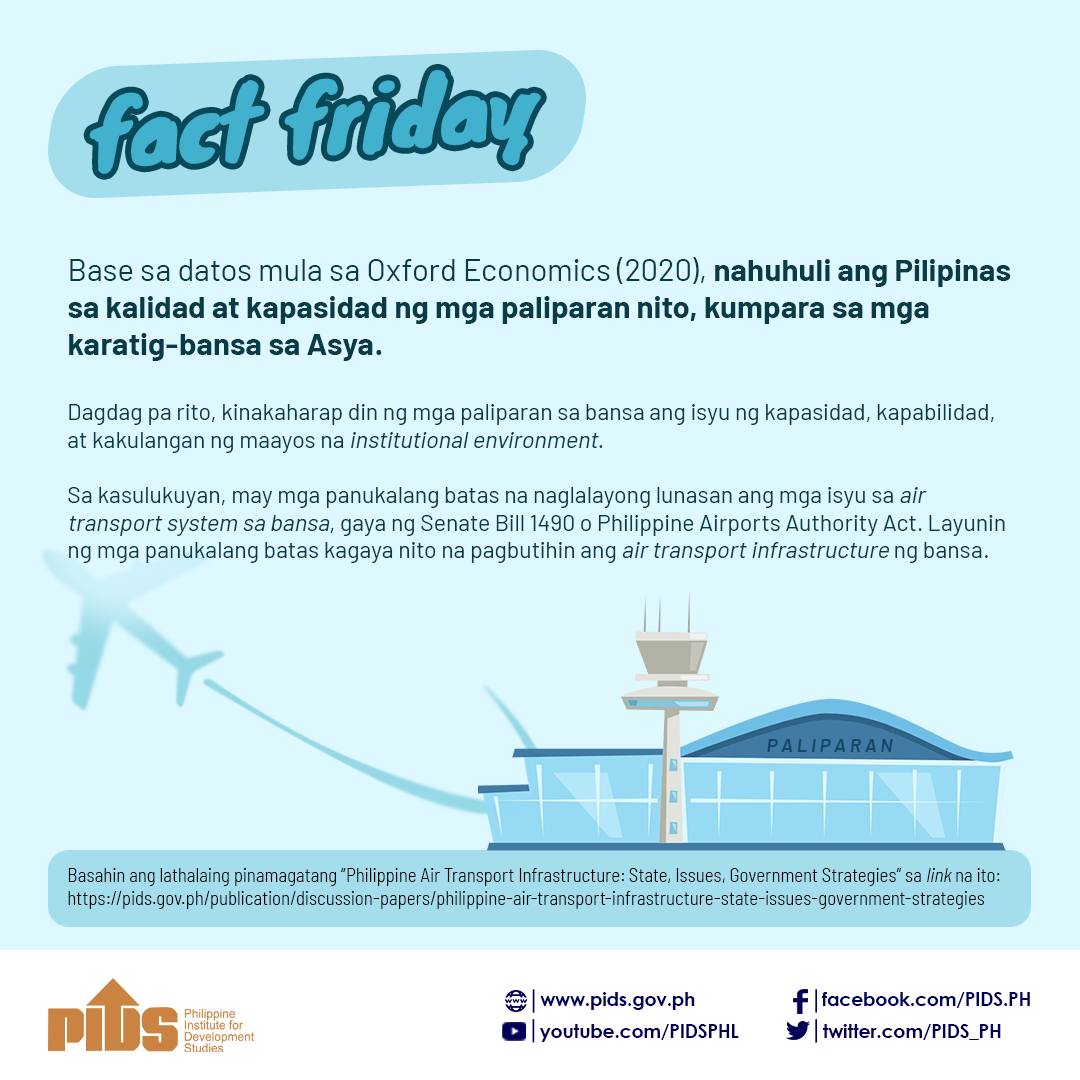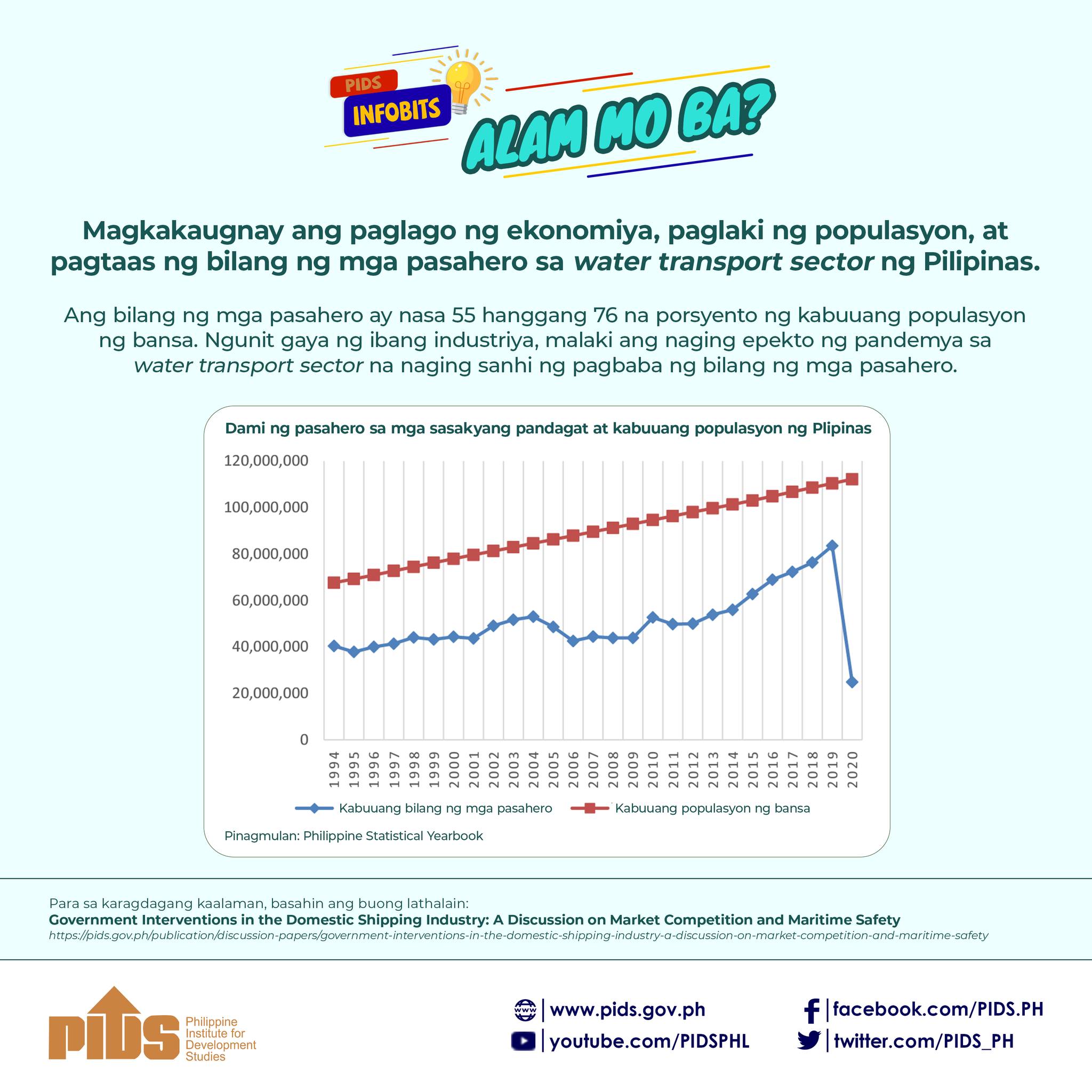ACCORDING to the World Economic Forum’s 2019 Global Competitiveness Report, the Philippines continues to trail behind most of its Asian neighbors in terms of infrastructure competitiveness. It ranked 96th out of 141 economies. What’s wrong with us?
Enacting a long-term national transportation infrastructure plan can help implementers and stakeholders prepare, enforce, and resolve the “inadequate and poor quality” of Philippine road and rail transportation infrastructure – according to a recent study published by state think tank Philippine Institute for Development Studies. The study analyzed the status of the quantity and quality indicators of the country’s road and rail transport infrastructure and its interlinked stages of planning, programming, budgeting, implementation, and monitoring and evaluation.
Many of the targets of the Philippine Development Plan (PDP) 2017-2022, the Public Investment Program, and the expenditure program remain unmet, mostly due to implementation issues. Among these are persistent problems such as acquiring right-of-way or strips of land used as a transportation route (for example, right-of-way for the Ungka flyover in Iloilo), lack of local government capability and funding, natural disasters, project management challenges, and political interference.
It would be ideal for Congress to pass legislation establishing procedures for right-of-way planning and project prioritization in conjunction with a long-term transportation strategy. Seeking reform champions to reduce Congressional bill introductions and fast-tracking executive approvals are necessary, according to the study.
But there are other new issues that adversely affect the road and rail transport sector, such as the pandemic’s detrimental effect on the materials and labor supply chain and the challenge of managing delays in projects supported by “for later release” funds from the national budget adjustments by Congress.
One of the targets for the road transport sector in the updated PDP was improving the international roughness index (IRI) for national primary roads from 4.62 in 2015 to 3.0 in 2022. By 2019, based on the latest Department of Public Works and Highways survey on IRI, it was apparent that there was no improvement; the national average IRI deteriorated to 4.68.
The rail transport sector had also suffered years of neglect. Despite recent attempts to catch up in the expansion and improvements, the task is simply gargantuan that the recent progress cannot be considered significant.
The study recommended further capacitating local government units as they perform a bigger role in implementation, given the Supreme Court ruling on the Mandanas-Garcia case.

